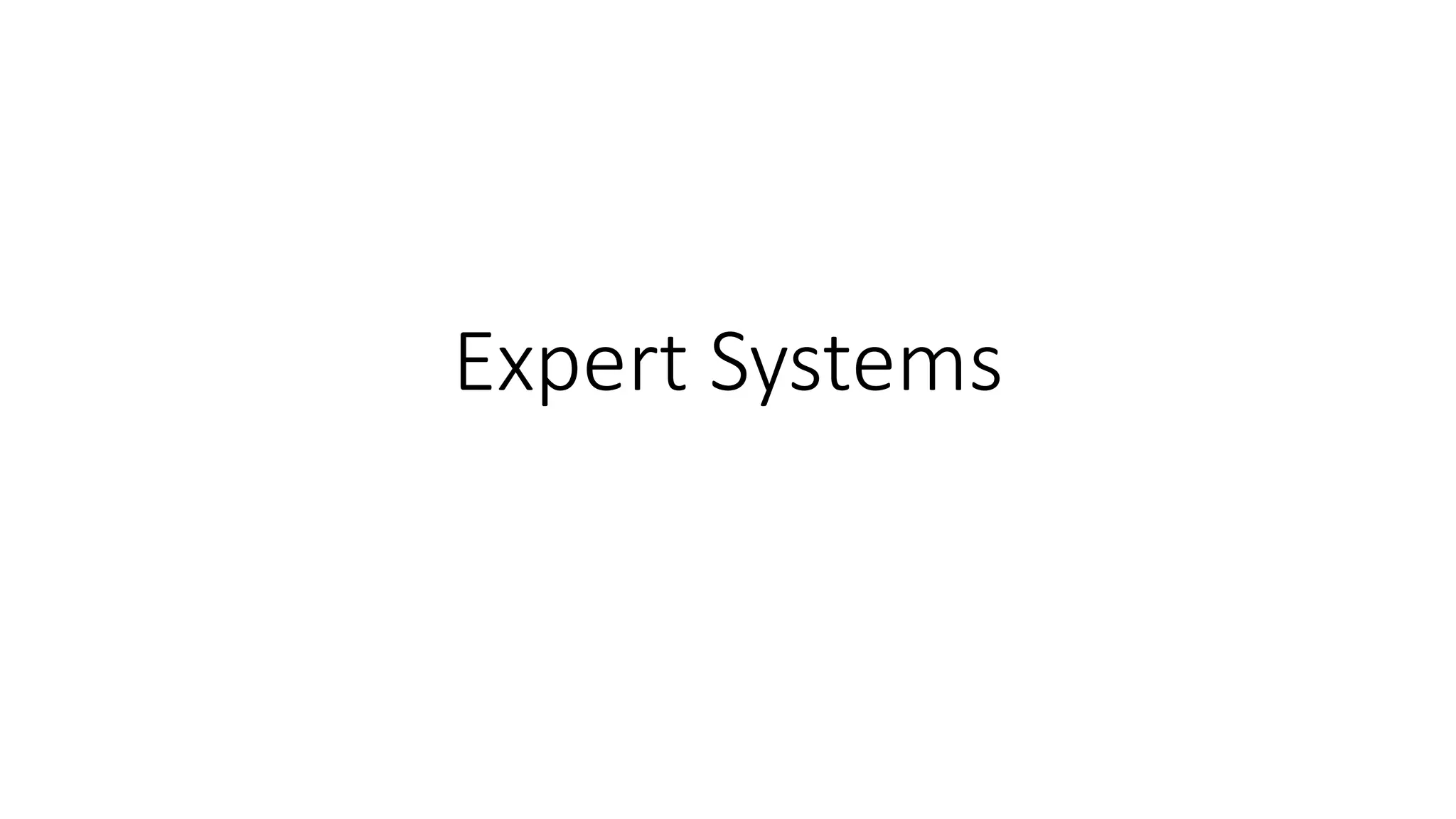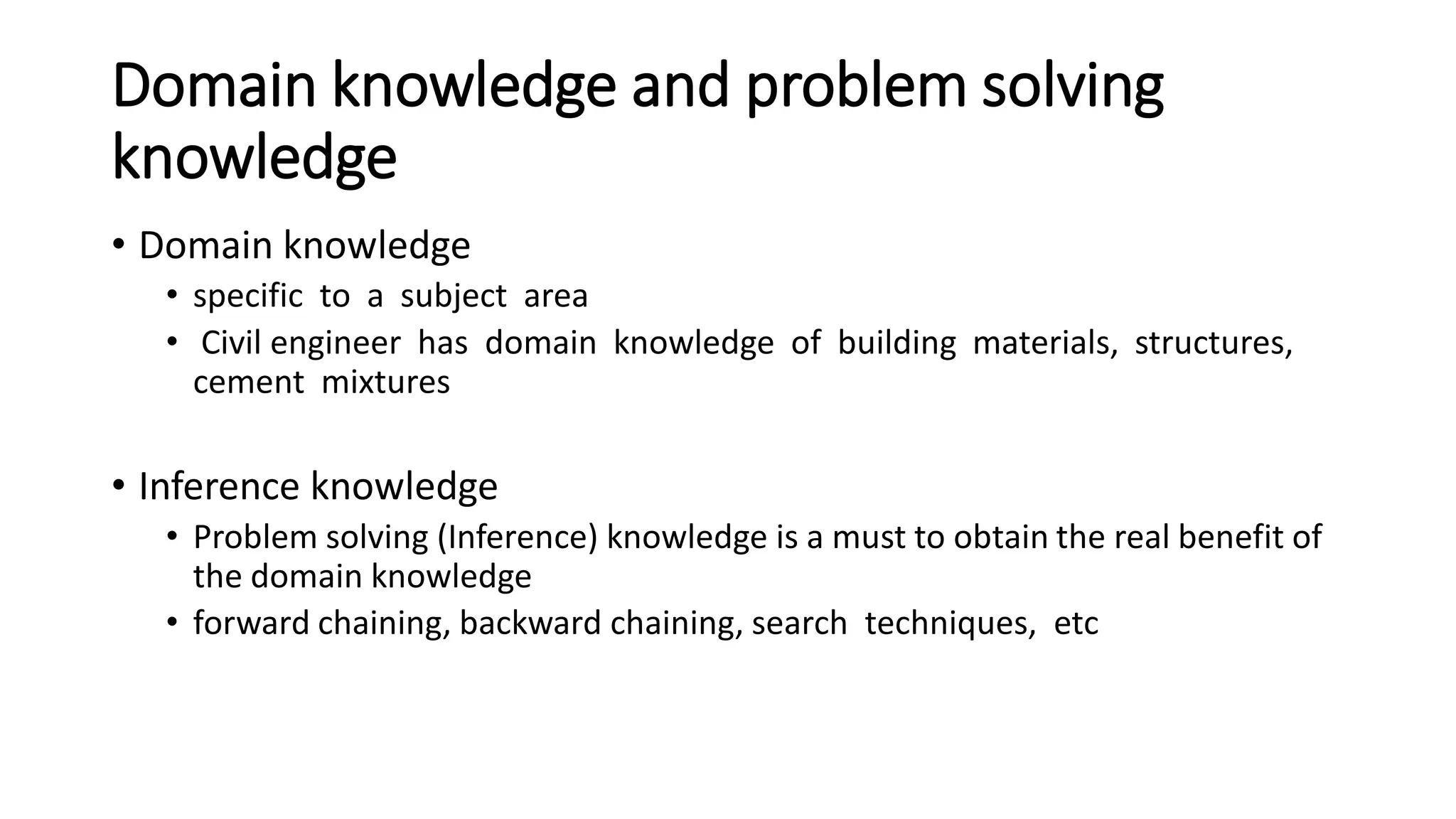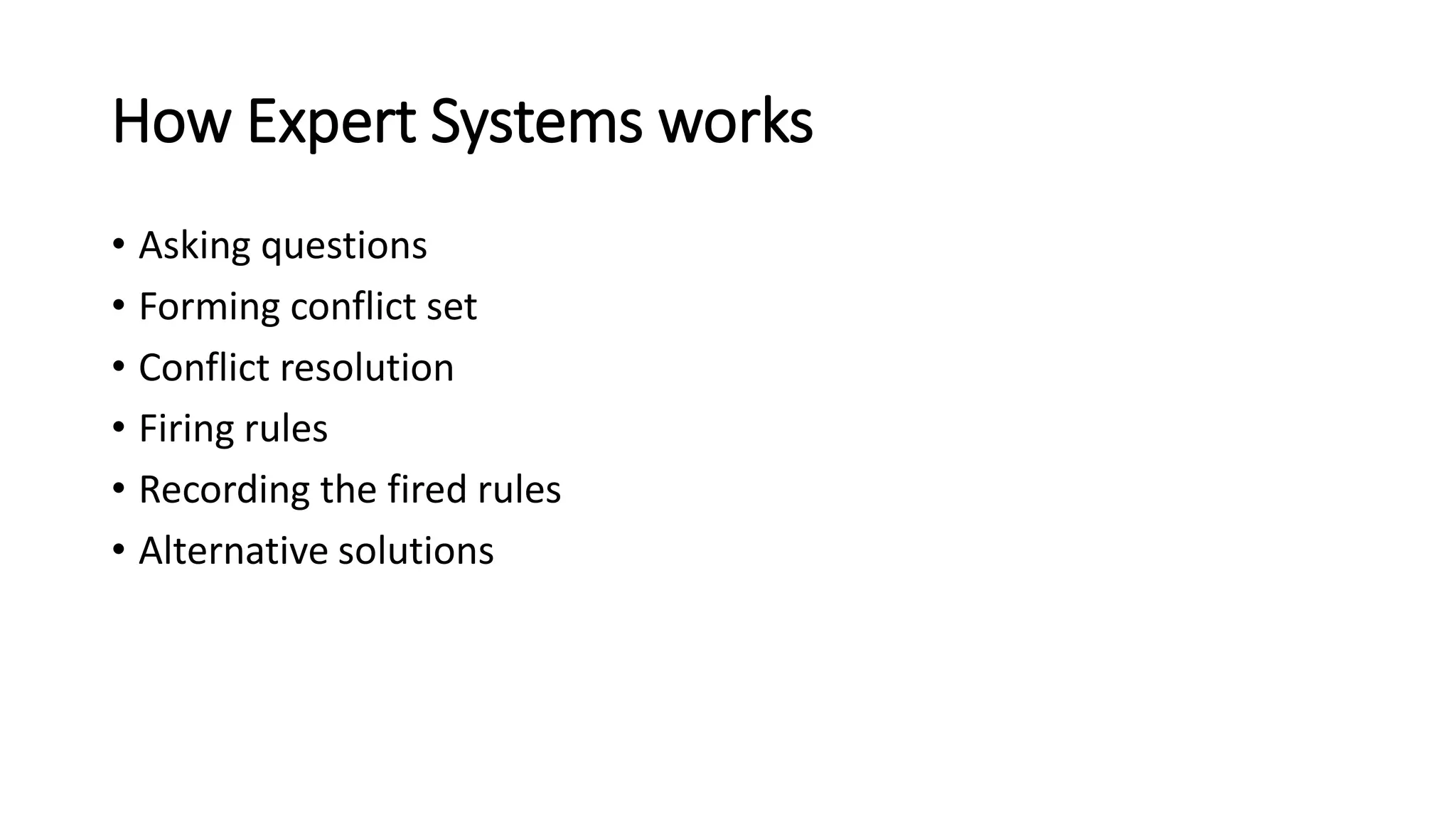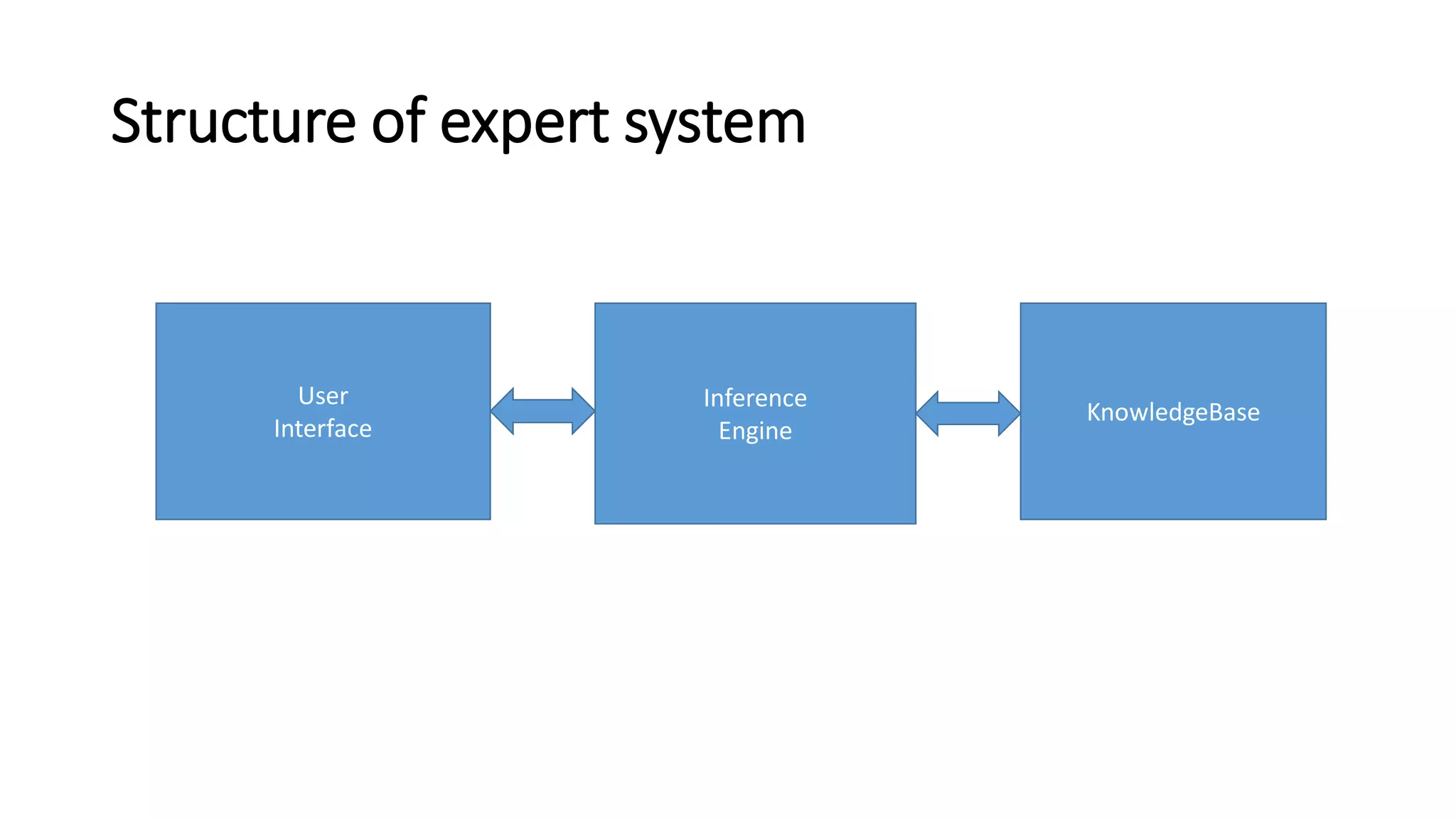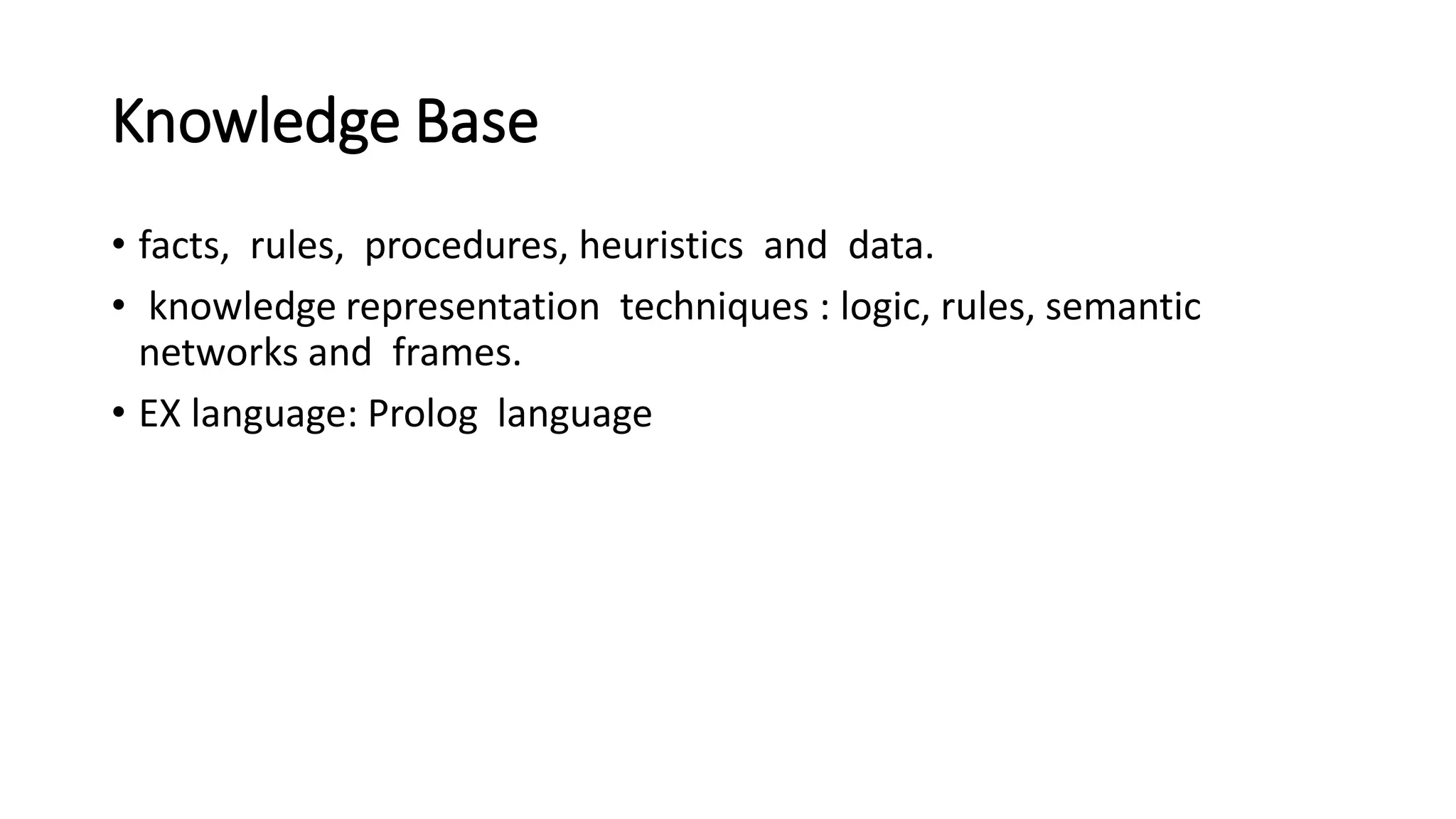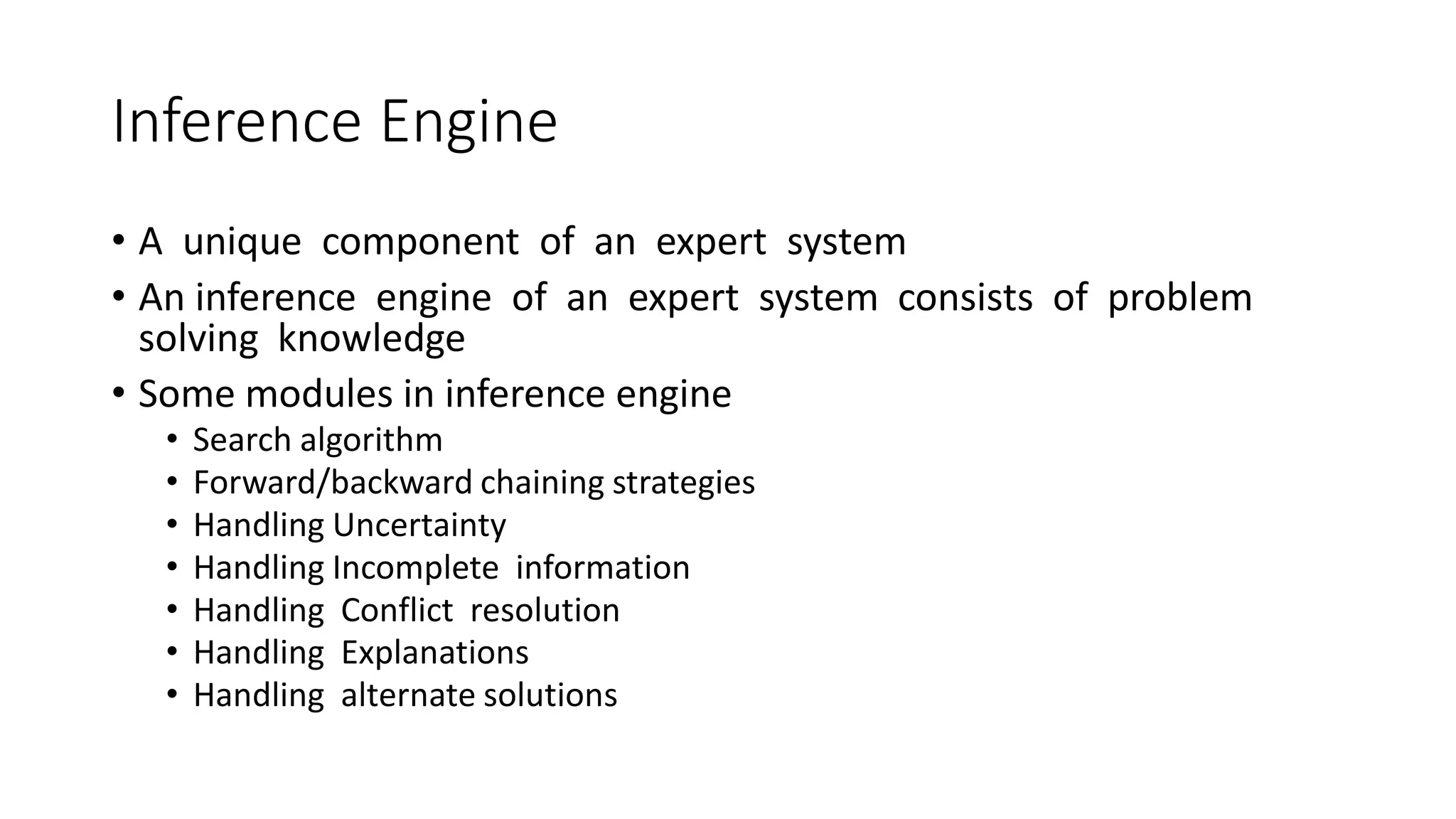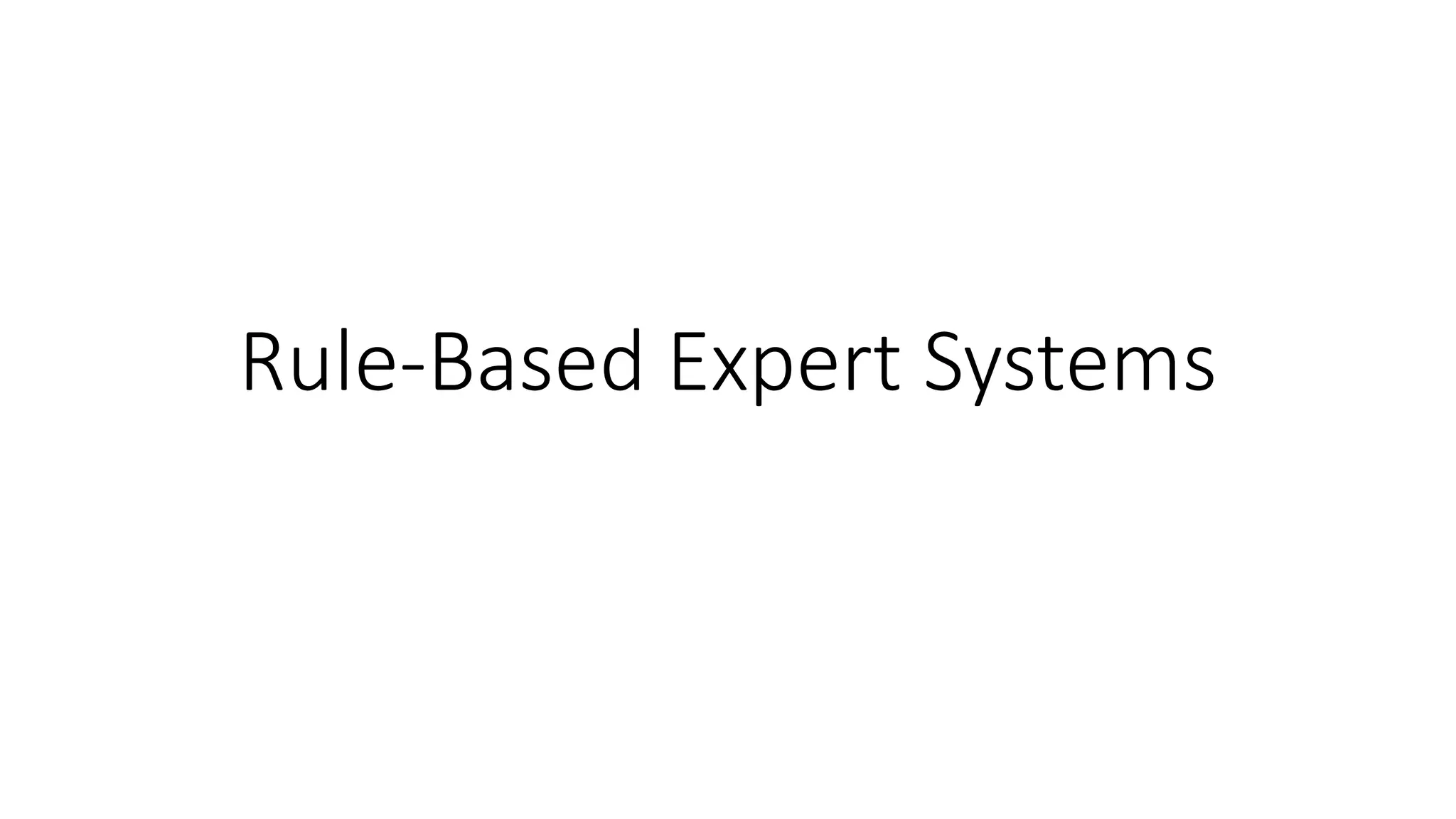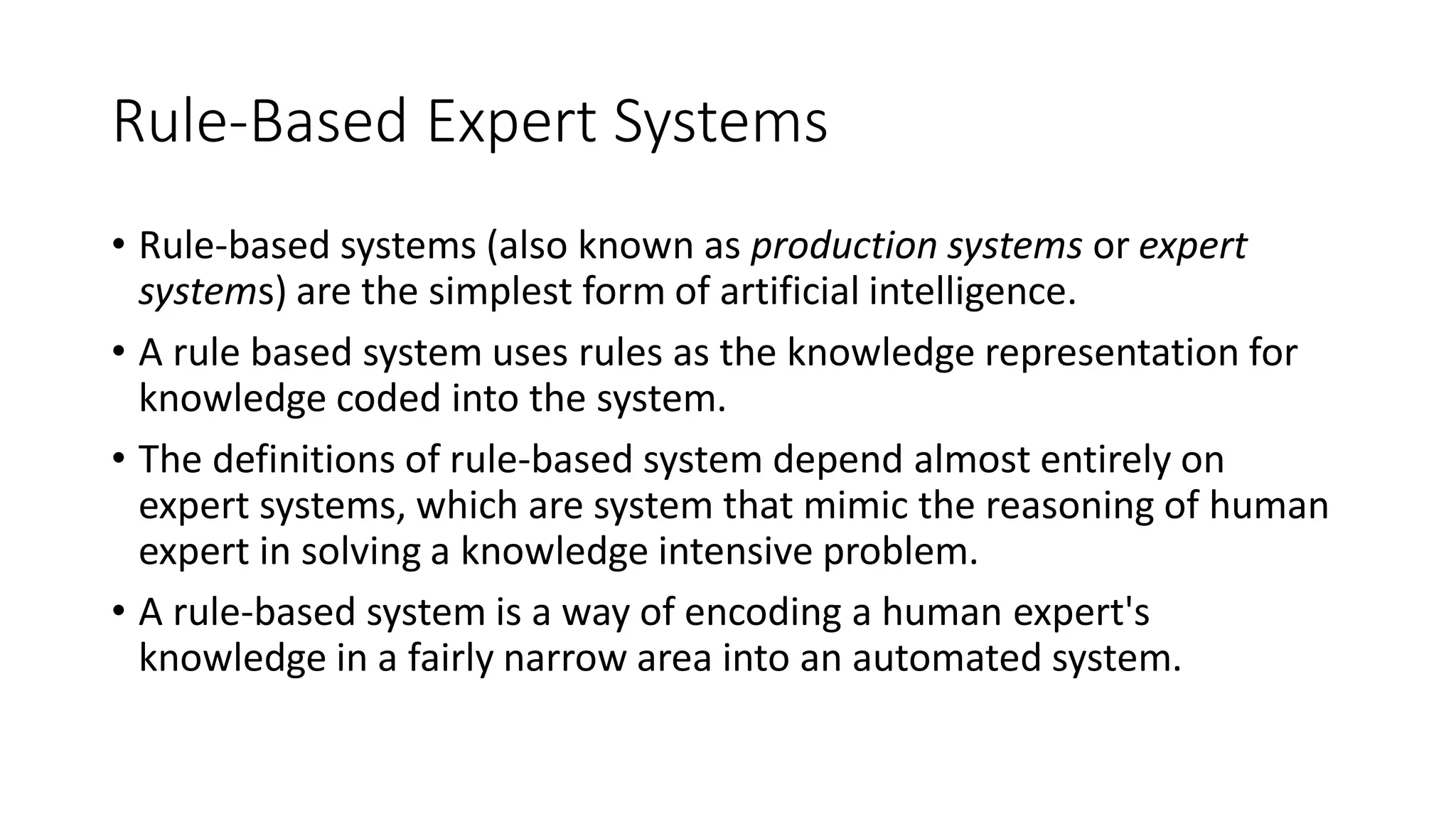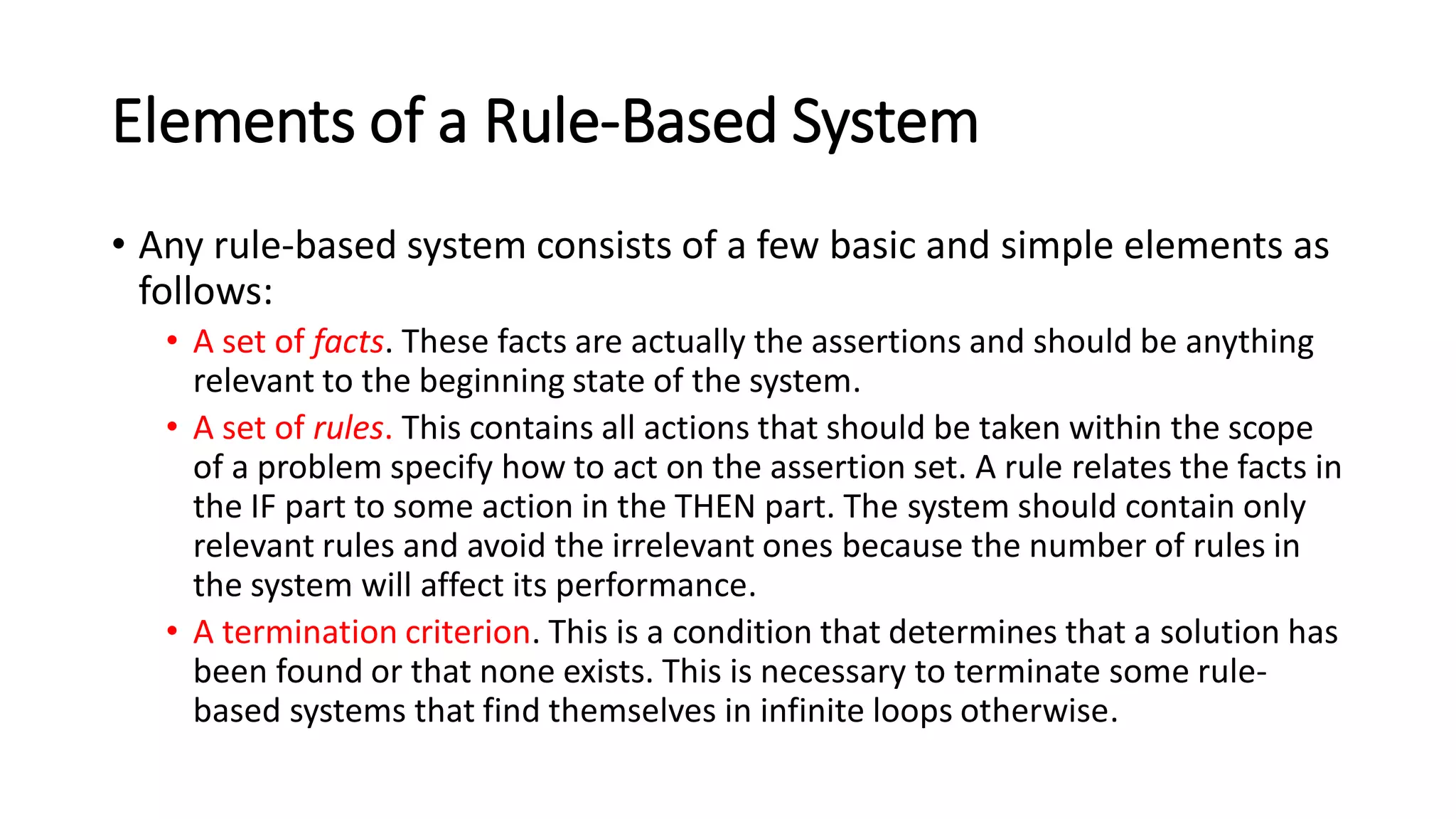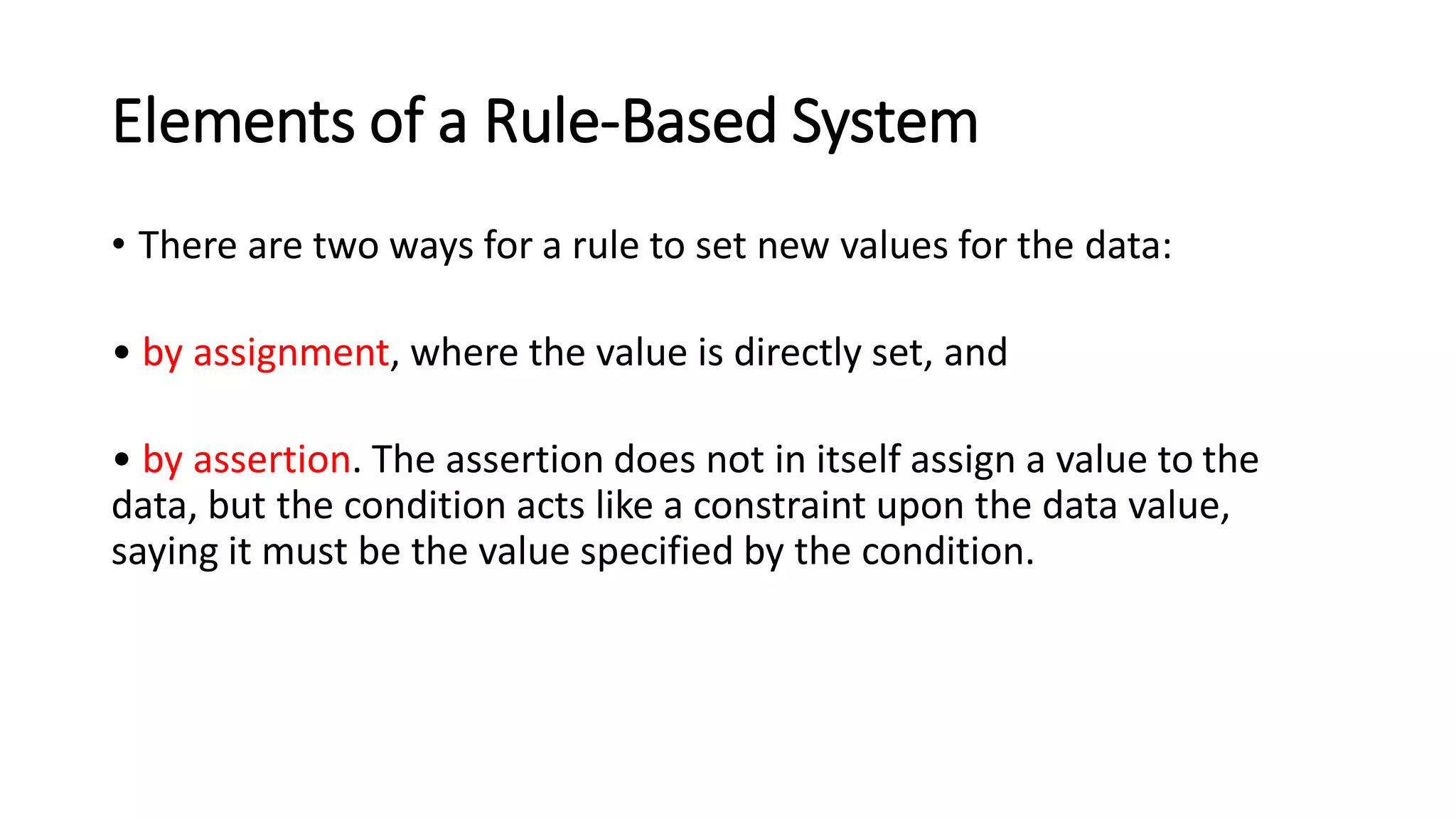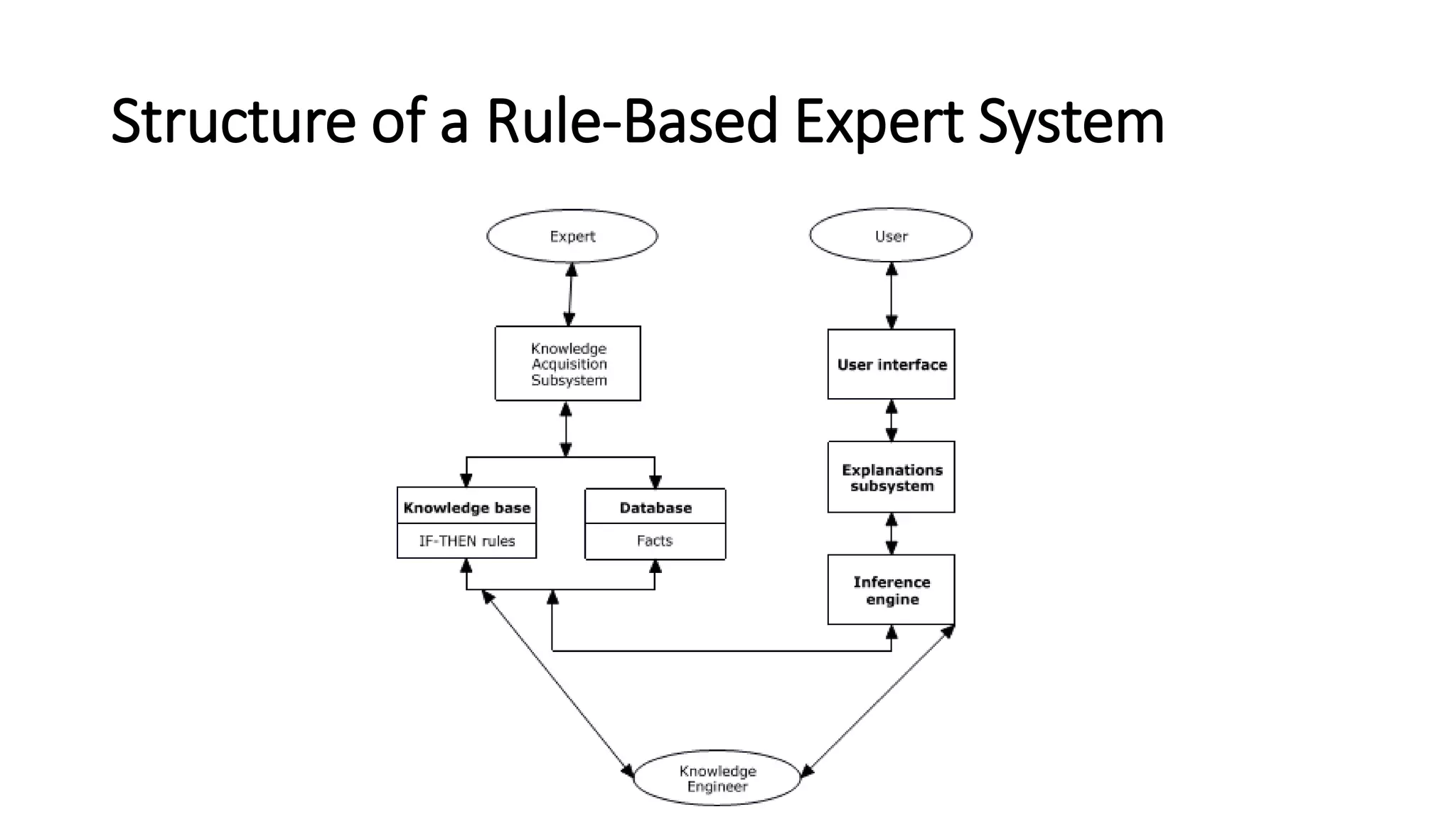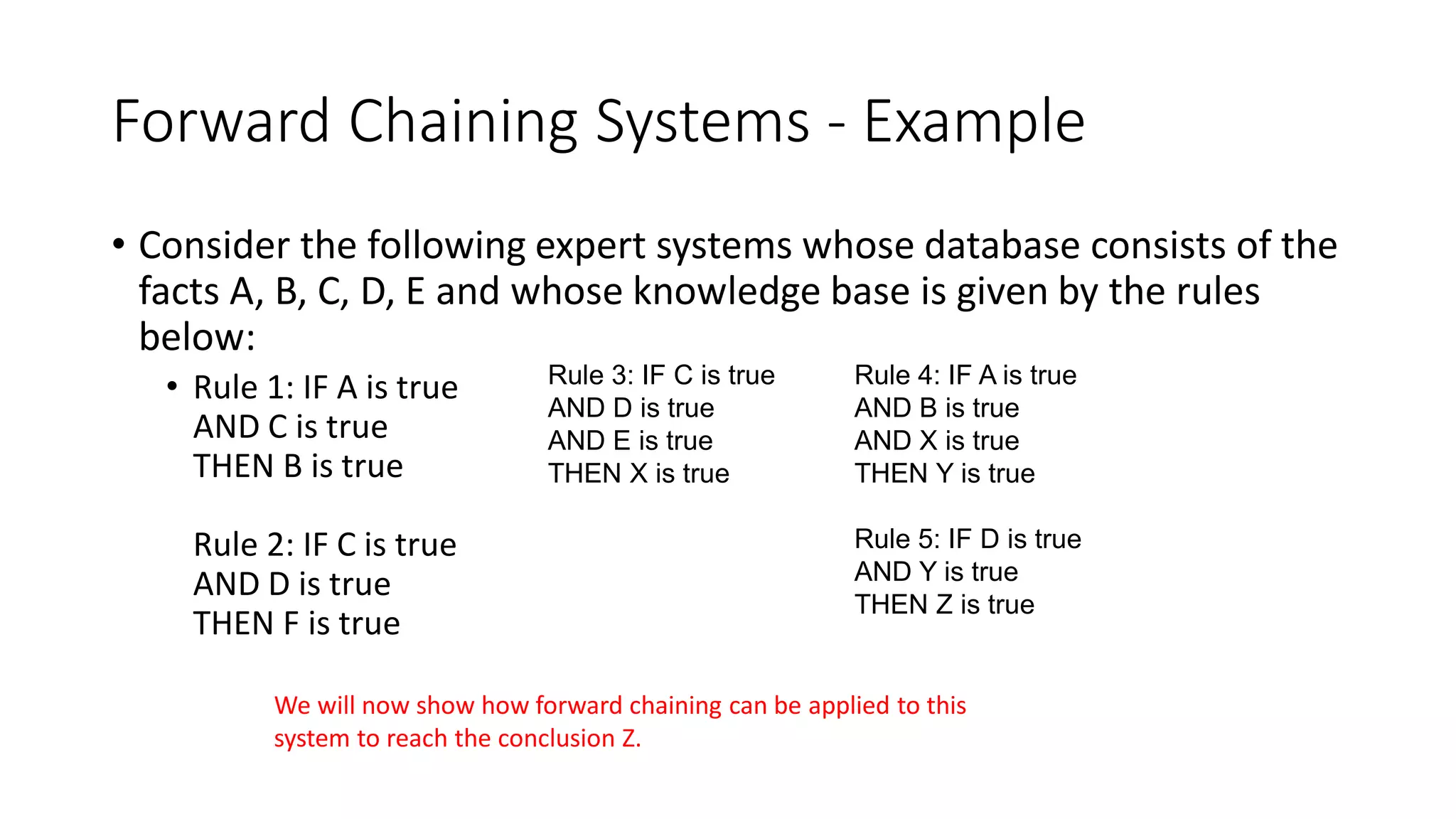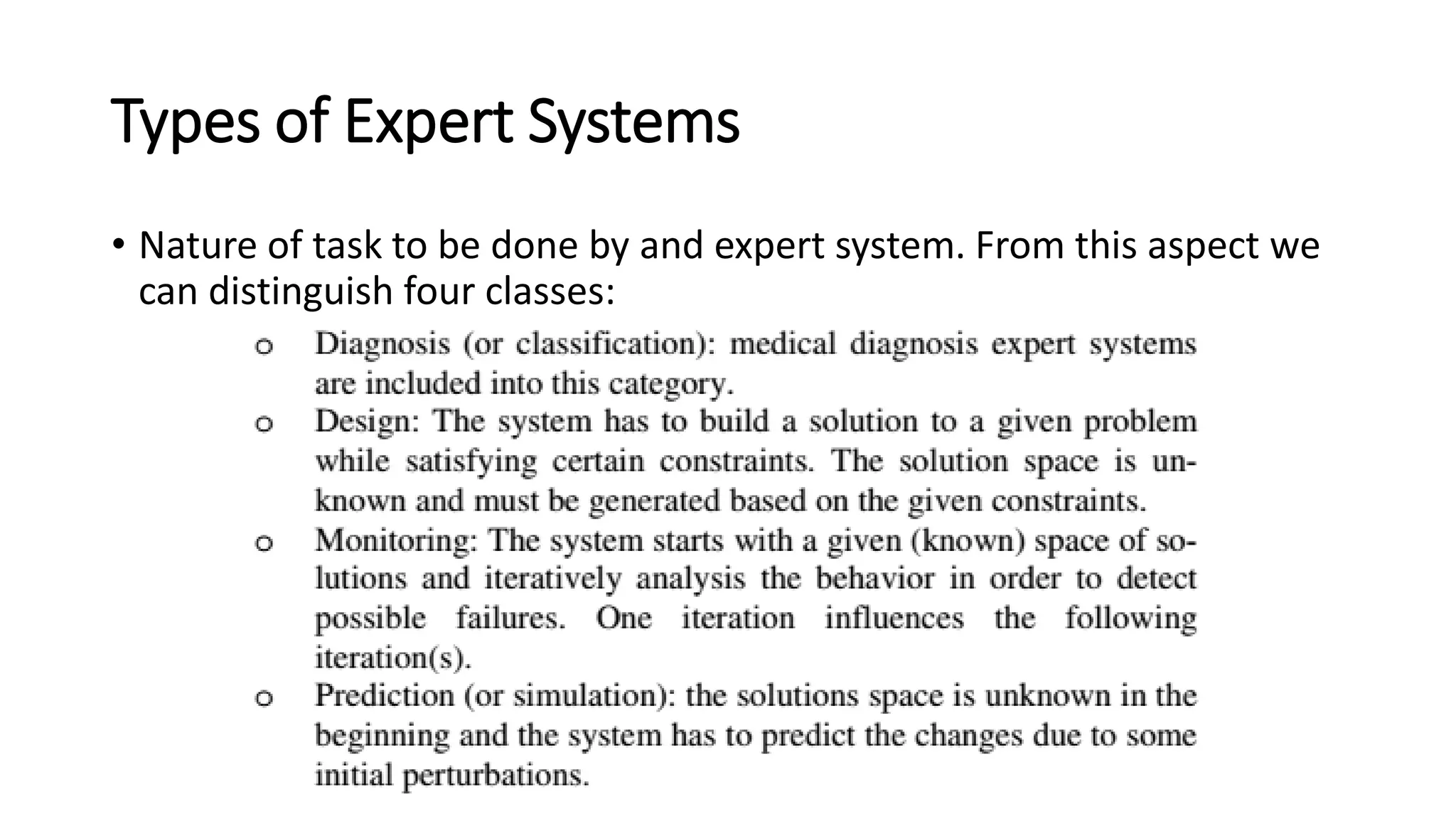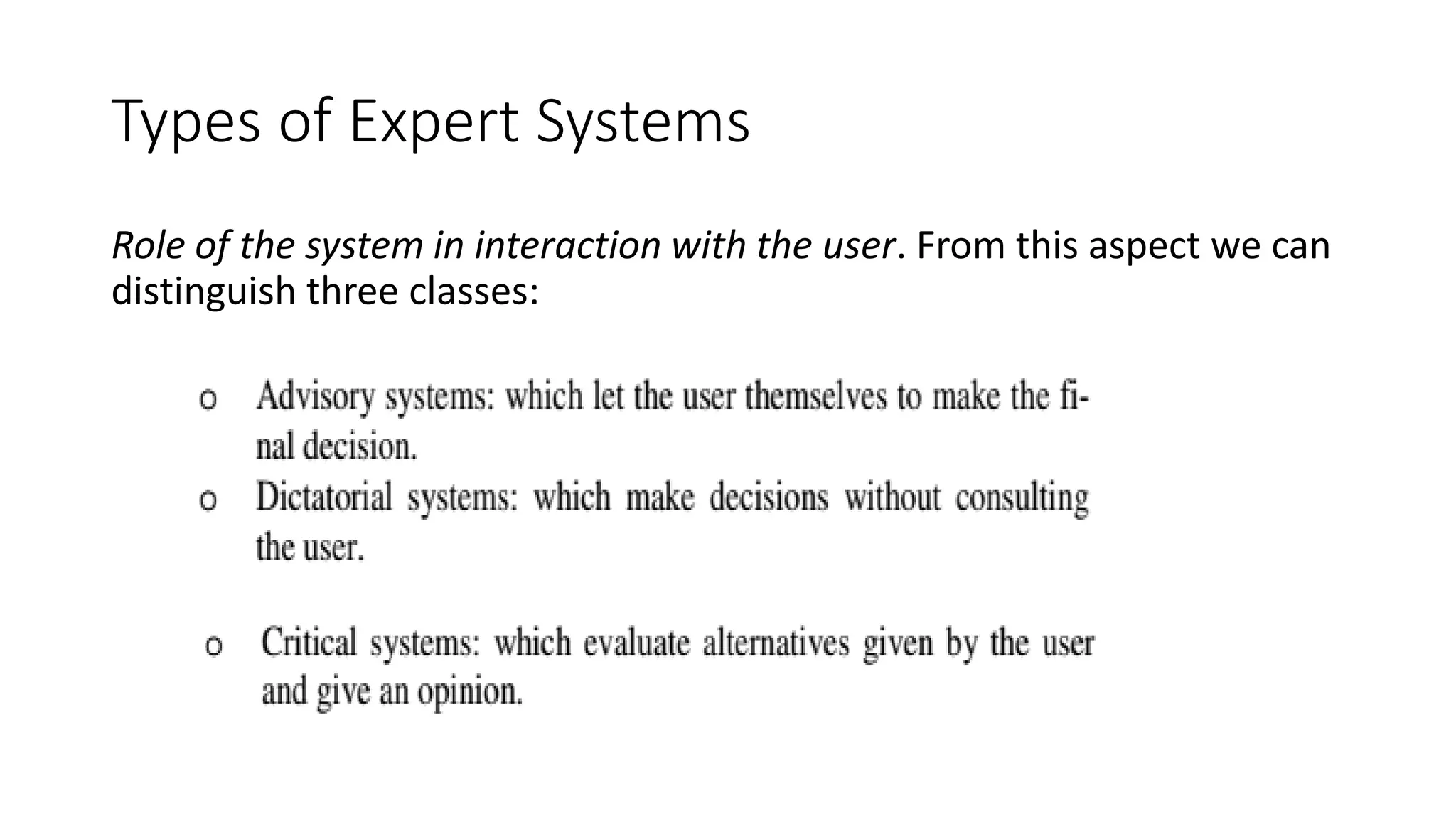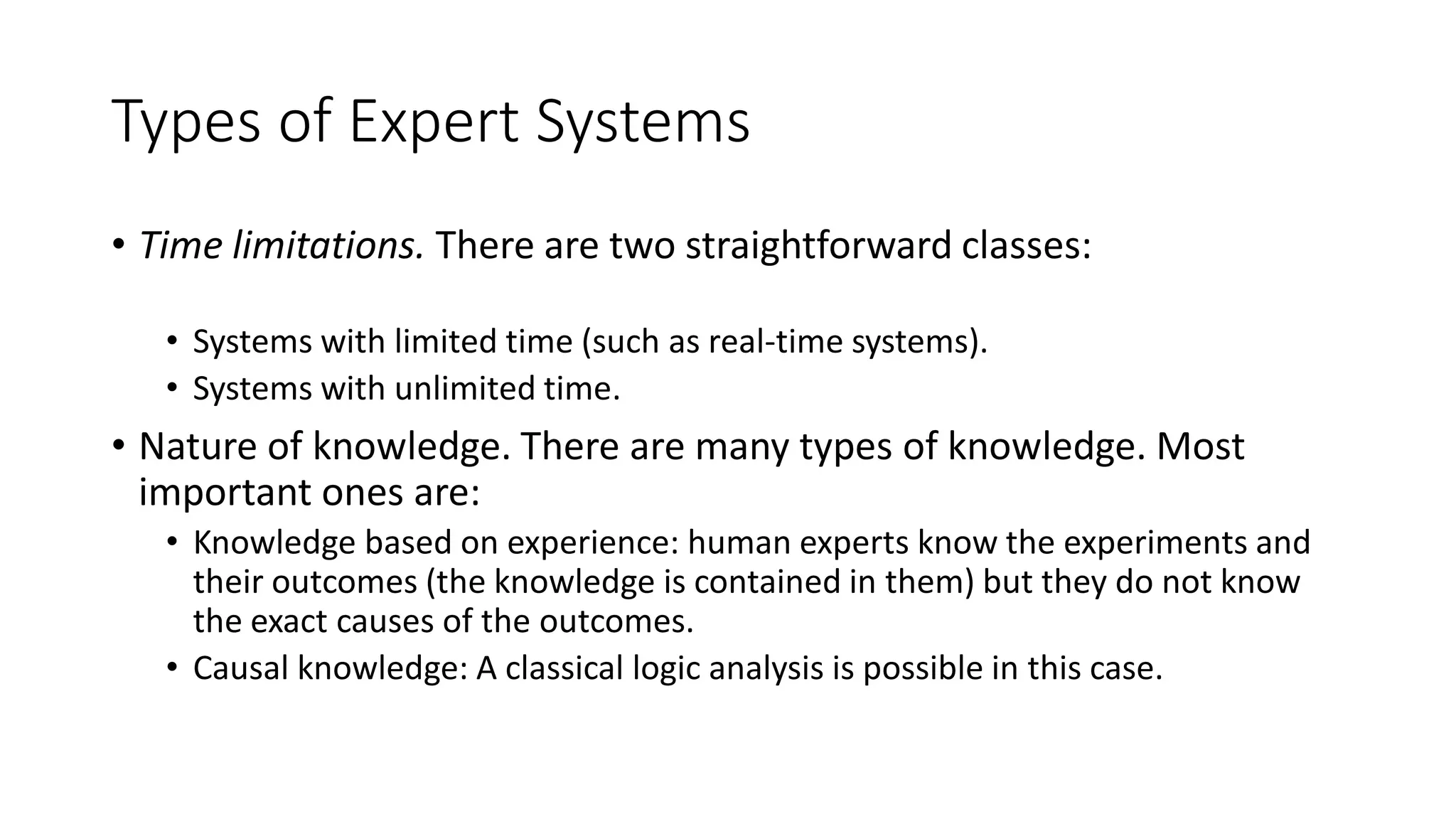Expert systems use rules and heuristics to solve problems in specific domains like medicine or engineering. They operate on incomplete information and provide recommendations rather than exact answers. Rule-based expert systems consist of a knowledge base containing IF-THEN rules, a working memory of facts, and an inference engine that applies rules to derive new facts or recommendations. The inference engine matches rules to facts, selects rules to fire using conflict resolution strategies, and repeats the process until a solution or termination criteria is reached. Managing uncertainty is important, and can be done using probability, fuzzy logic, or other methods. Hybrid systems integrate techniques like neural networks, fuzzy systems, and evolutionary computation.
